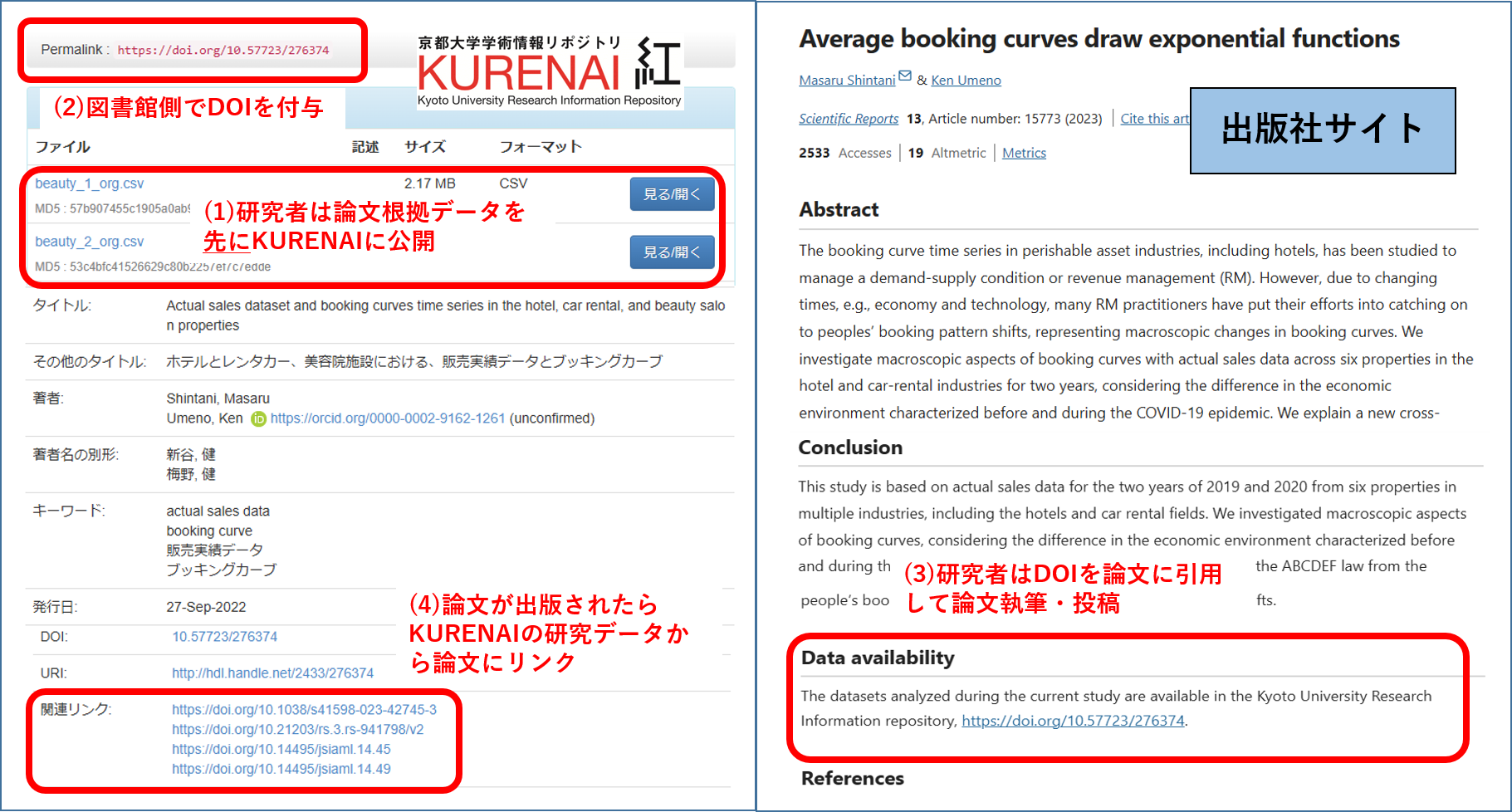Advantages of releasing research data (Evidence Data for Articles) to KURENAI
Have you ever had trouble finding a place to register and publish your research data when submitting a paper? →You can register and publish your research data on KURENAI.
Kyoto University Repository for Academic Information “KURENAI” is an institutional repository where members of Kyoto University can register the products of research and educational activities at Kyoto University.
Advantages of releasing research data (Evidence Data for Articles) to KURENAI
- DOIs can be assigned to research data (data supporting papers). By assigning a DOI, it becomes easier for the data to be cited, and it is expected to increase the visibility of research results.
- In recent years, the submission rules and writing guidelines of academic journals have increasingly required the publication of the evidence data of research papers. In such cases, KURENAI can be used as a place to register and publish the evidence data of your paper.After registering and publishing the data on which your paper is based in KURENAI, you can cite the DOI in your paper and submit it for publication (i.e., the data-first open access (OA) research cycle).
- The Data-First OA research cycle procedure is as follows. We will introduce a practical example with research data and papers by Professor Ken Umeno of the Graduate School of Informatics, who is practicing it.
Practical examples
- The researcher registers and publishes the data on which the article is based in KURENAI first.
- DOI is assigned by the library.
- Research data in KURENAI: https://doi.org/10.57723/276374
- Researchers cite the DOIs in their papers and write/submit their papers.
- Papers on the publisher's site: https://doi.org/10.1038/s41598-023-42745-3
- When the paper is published, link to the paper from KURENAI's research data.
- Manuscript files are also registered with KURENAI and made public.
- Manuscripts of papers in KURENAI: http://hdl.handle.net/2433/285297

Researchers have commented that it is very good that they can assign DOIs to their research data and that the data itself can be retained by the university (KURENAI).